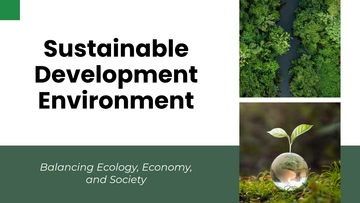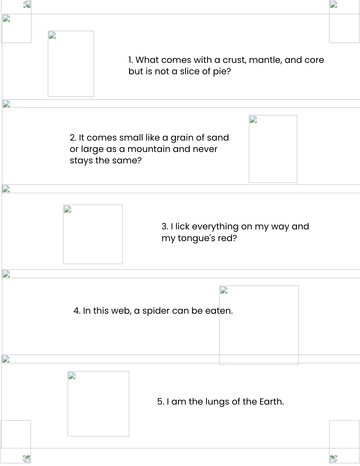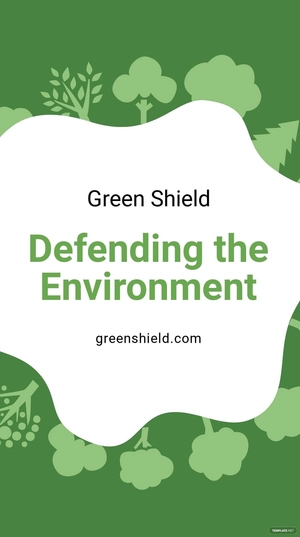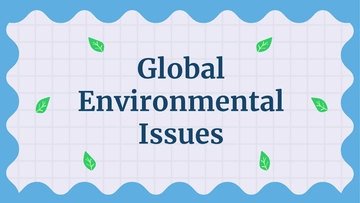Free Nursing Home Environment of Care Standard Guide
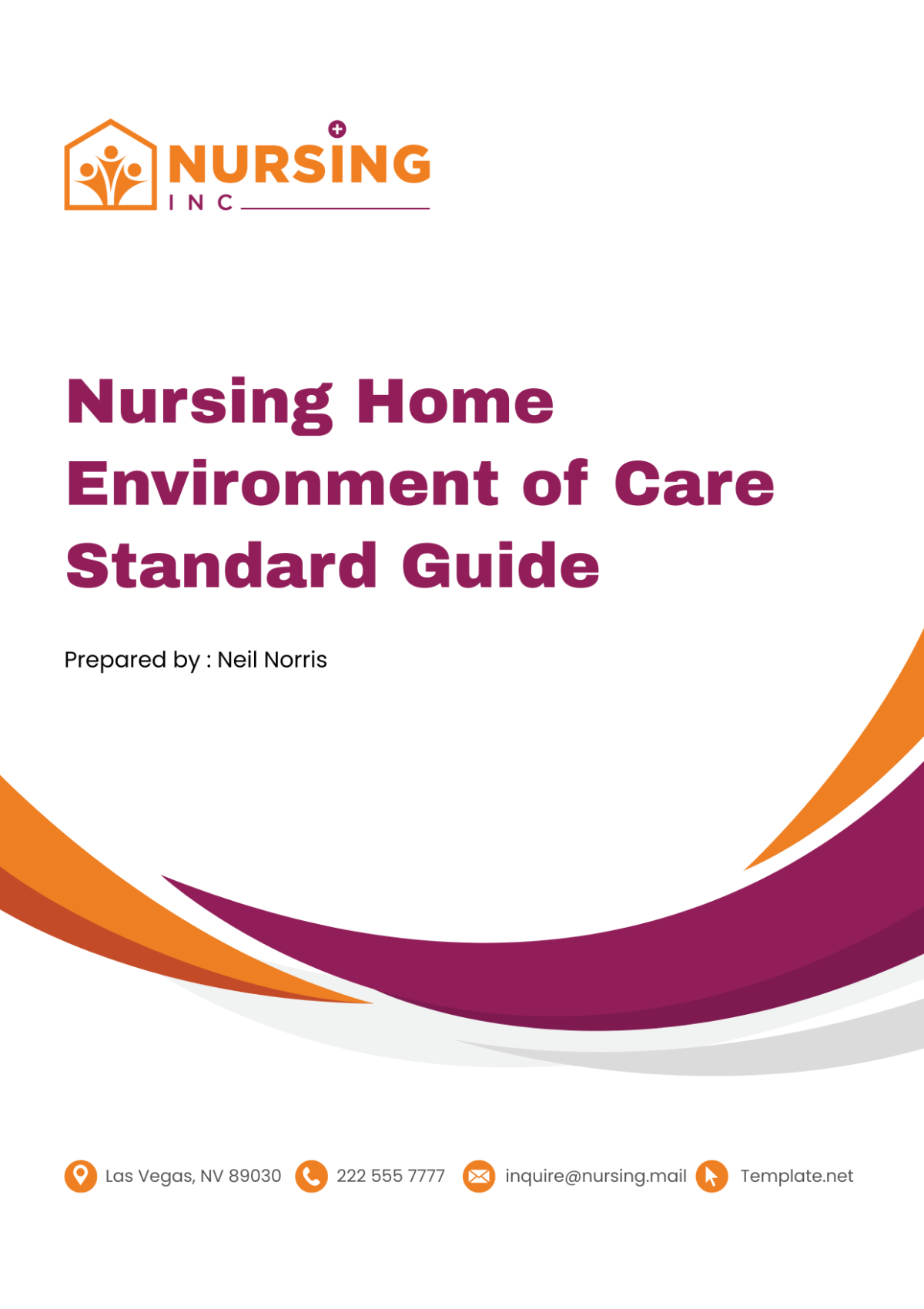
This guide is your comprehensive roadmap to creating and maintaining a caring environment within a nursing home that adheres to the highest standards of safety, cleanliness, comfort, and well-being.
I. Core Policies and Procedures
In our commitment to providing a safe and nurturing environment for our residents, [Your Company Name] meticulously adheres to stringent core policies and procedures that set the benchmark for excellence in nursing home care. Central to our ethos are measures that ensure the utmost protection, well-being, and dignity of each individual under our care:
Resident Protection: We prioritize the safety and security of our residents, implementing rigorous protocols to safeguard them from potential hazards. Our staff receives continuous training on emergency preparedness, infection control, and the latest health and safety regulations to ensure a secure living environment.
Medication Management: Our comprehensive medication management system ensures accuracy in medication administration, storage, and monitoring. We employ state-of-the-art technology and collaborate closely with healthcare professionals to tailor medication regimens that meet the specific needs of each resident, minimizing risks and enhancing health outcomes.
Fall Prevention: Recognizing the significant impact of falls on the health and independence of our residents, we have developed a robust fall prevention strategy. This includes environmental modifications, personalized risk assessments, and staff education on fall risk reduction, all aimed at fostering a safe and accessible environment.
Restraint Usage: We adhere to a strict policy on the minimal use of restraints, advocating for alternative measures that promote autonomy and mobility. When necessary, restraints are applied judiciously, under close medical supervision, and always with the paramount goal of resident safety and comfort.
Abuse and Neglect Prevention: Upholding the dignity and rights of our residents is non-negotiable. We enforce a zero-tolerance policy towards abuse and neglect, backed by thorough background checks on all staff, regular training on resident rights, and an open, supportive environment where residents and families can report concerns without fear of retribution.
Through the diligent application of these core policies and procedures, [Your Company Name] exemplifies a standard of care that respects the individuality and autonomy of our residents while ensuring their safety and well-being.
II. Best Practices for Environment Maintenance
Our commitment at [Your Company Name] to providing an exceptional living environment is unwavering. The table below expands on our focus areas and outlines detailed best practices aimed at maintaining a clean, safe, and inviting atmosphere conducive to the health and happiness of our residents:
Area of Focus | Best Practice | Relevant Details |
|---|---|---|
Cleanliness | Implement daily cleaning routines adhering to strict sanitation protocols. | Use hospital-grade disinfectants and ensure high-touch areas are cleaned multiple times a day. Regularly review cleaning protocols to incorporate the latest health recommendations. |
Ergonomics | Select furniture and equipment that reduce ergonomic stress. | Provide adjustable furniture to accommodate residents' varying needs. Offer training for residents and staff on how to adjust settings for optimal comfort and safety. |
Repairs | Conduct periodic inspections and maintenance checks. | Establish a preventive maintenance schedule for all equipment and facilities. Implement a swift response system for repair requests to minimize downtime. |
Environment Quality | Monitor and adjust temperature, lighting, and noise levels. | Install advanced HVAC systems for optimal air quality and temperature control. Use LED lighting for energy efficiency and circadian rhythm support. Implement noise reduction measures in design. |
Outdoor Spaces | Regularly maintain outdoor areas. | Develop accessible and secure walking paths, therapeutic gardens, and outdoor seating areas. Schedule regular safety inspections and seasonal landscaping. |
Safety & Security | Ensure comprehensive security measures are in place. | Install surveillance cameras in common areas while respecting privacy, implement secure entry and exit systems, and conduct regular safety drills with residents and staff. |
Accessibility | Enhance accessibility within the facility. | Install ramps, handrails, and elevators to ensure that all areas are accessible to residents with varying levels of mobility. Assess and update accessibility features annually. |
Technology Integration | Incorporate technology to improve resident care and environment maintenance. | Utilize electronic health records for efficient information sharing. Implement smart devices for environment monitoring (e.g., temperature, lighting). |
Resident Engagement | Facilitate environments that encourage resident socialization and engagement. | Design common areas to be inviting spaces for activities and social gatherings, with considerations for mobility and comfort. Offer a variety of programmed events and activities. |
Sustainability Practices | Adopt eco-friendly practices in maintenance routines. | Use renewable energy sources where possible, recycle waste, and choose sustainable materials for repairs and renovations. Educate staff and residents on sustainability practices. |
By adhering to these best practices, [Your Company Name] not only ensures a well-maintained and safe environment but also fosters a community where residents feel engaged, respected, and valued. This holistic approach to environment maintenance underscores our dedication to the highest standards of care and quality of life for our residents.
III. Infection Control Measures
At [Your Company Name], we recognize the critical importance of stringent infection control measures to safeguard the health of our residents and staff. Our comprehensive approach is detailed in the table below, which outlines our key strategies and the practices we employ to prevent the spread of infections within our facility:
Strategy | Practice | Implementation Details |
|---|---|---|
Regular Hand Hygiene | Encourage and enforce handwashing and sanitizing. | Install hand sanitizing stations throughout the facility. Conduct regular training sessions for staff and residents on proper hand hygiene techniques. |
Personal Protective Equipment (PPE) | Ensure the correct use of PPE by staff and visitors. | Provide ongoing training on PPE use. Maintain a well-stocked inventory of masks, gloves, gowns, and face shields. |
Isolation Procedures | Implement isolation protocols for residents with infectious conditions. | Designate specific isolation areas for infectious residents. Train staff on the procedures for handling and caring for isolated individuals. |
Vaccination Protocols | Maintain up-to-date vaccinations for residents and staff. | Offer flu, pneumonia, and COVID-19 vaccines as recommended. Keep vaccination records and send reminders for upcoming doses. |
Routine Cleaning and Disinfection | Regularly clean and disinfect high-touch surfaces and common areas. | Use EPA-approved disinfectants. Schedule increased cleaning frequencies for high-traffic areas and surfaces. |
Air Quality Management | Improve and maintain indoor air quality. | Implement the use of HEPA filters and increase ventilation in resident and common areas. Monitor air quality indexes regularly. |
Visitor Screening | Screen visitors for symptoms and potential exposure to infections. | Conduct temperature checks and symptom questionnaires at entry points. Limit access during outbreaks. |
Education and Training | Provide ongoing education on infection control to staff and residents. | Organize workshops and training sessions covering the latest guidelines and practices in infection prevention. |
Surveillance and Reporting | Monitor and report infections within the facility. | Establish a system for early detection and reporting of infectious diseases. Collaborate with local health departments as necessary. |
Waste Management | Proper disposal of medical and hazardous waste. | Follow state and federal guidelines for segregating, handling, and disposing of hazardous waste to prevent cross-contamination. |
Through the diligent implementation of these infection control measures, [Your Company Name] is committed to minimizing the risk of infectious diseases and providing a safe, healthy environment for our residents and staff. Our proactive and comprehensive approach ensures that we are prepared to respond effectively to any potential health threats, reinforcing our dedication to the well-being and safety of our community.
IV. Emergency Preparedness
At [Your Company Name], recognizing the paramount importance of readiness in the face of emergencies, we have established a comprehensive Emergency Preparedness Plan. This plan encompasses a range of protocols designed to ensure the safety and well-being of our residents and staff during unforeseen events. Detailed in the table below are the components of our plan, including the specific practices and their implementation details to ensure a swift and effective response:
Component | Practice | Implementation Details |
|---|---|---|
Evacuation Plan | Develop and maintain a clear evacuation strategy. | Map out evacuation routes and safe zones clearly. Conduct regular evacuation drills, ensuring that all staff and residents are familiar with the procedure. Special attention is given to mobility-impaired residents. |
Medical Emergency Response System | Implement a system for medical emergencies. | Equip common areas and resident rooms with emergency call systems. Train staff in first aid, CPR, and rapid response to medical alerts. |
Fire Safety Checks and Drills | Conduct regular fire safety inspections and practice fire drills. | Install and maintain fire detection and suppression equipment. Schedule monthly fire drills in collaboration with local fire departments. |
Training Staff on Emergency Procedures | Provide comprehensive emergency procedure training to staff. | Offer ongoing training sessions covering various scenarios, including natural disasters, power outages, and other potential emergencies. |
Communication System for Emergencies | Establish an effective system for emergency communications. | Utilize multiple communication channels (e.g., intercoms, mobile alerts) to ensure timely updates during an emergency. Prepare a contact list for emergency services and family members of residents. |
Resource Stockpile | Maintain a stockpile of essential resources and supplies. | Keep a sufficient supply of water, food, medications, and emergency equipment readily available. Regularly review and replenish stock as needed. |
Support for Residents with Special Needs | Account for the needs of residents with disabilities or special requirements. | Develop personalized evacuation and emergency response plans for residents requiring additional assistance. |
Emergency Power Solutions | Ensure backup power systems are in place and functional. | Install generators or alternative power sources to maintain critical operations and safety systems during power outages. |
Partnerships with Local Authorities | Collaborate with local emergency services and health departments. | Establish agreements and regular communication with local emergency responders, hospitals, and health departments to coordinate support and resources. |
Post-Emergency Recovery Plan | Create a plan for recovery and return to normal operations post-emergency. | Include protocols for assessing damage, restoring services, and providing psychological support and counseling to residents and staff affected by the emergency. |
Through these carefully structured components and practices, [Your Company Name] ensures a state of readiness to effectively manage emergencies. Our Emergency Preparedness Plan is a testament to our commitment to the safety and security of our community, demonstrating our proactive stance in facing any challenges that may arise.
V. Staff Training and Routine Evaluation
We recognize that the cornerstone of exceptional care lies in a well-trained and continuously evaluated staff. Our commitment to excellence is reflected in our comprehensive approach to staff development and assessment, ensuring that we not only meet but exceed the evolving standards of care. Below, we outline the key components of our staff training and routine evaluation process, along with the practices we have implemented to foster a culture of continuous improvement and empathy:
Component | Practice | Implementation Details |
|---|---|---|
Regular Skills and Knowledge Refreshers | Conduct ongoing educational programs and workshops. | Provide access to online courses, in-person training sessions, and professional development workshops to ensure staff are up-to-date with the latest practices in healthcare. |
Audits for Quality Control | Implement a systematic approach to auditing care quality. | Perform regular, unannounced audits on different aspects of care delivery and facility management to identify areas for improvement. |
Feedback Collection and Integration | Establish a feedback loop from residents, families, and staff. | Use surveys, suggestion boxes, and meetings to gather feedback. Implement a system for addressing feedback and integrating actionable insights into care practices. |
Staff Sit-in Sessions for Empathy Building | Facilitate sessions where staff experience aspects of resident care. | Organize periodic sit-in sessions where staff members participate in activities wearing simulation tools to better understand the residents' experiences and challenges. |
Regular Performance Evaluations | Perform comprehensive evaluations of staff performance. | Develop a structured evaluation process that includes both qualitative and quantitative assessments, with regular feedback sessions to discuss achievements and areas for growth. |
Peer Review Mechanisms | Encourage peer-to-peer evaluations and support. | Facilitate a culture of peer review where staff can share insights, learn from each other, and collaboratively improve their practices. |
Recognition and Rewards System | Implement a system to recognize and reward outstanding performance. | Create a program that acknowledges exceptional work, innovation, and dedication among staff, fostering motivation and a sense of accomplishment. |
Professional Growth Opportunities | Provide opportunities for career advancement and specialization. | Offer mentorship programs, leadership training, and support for continuing education to help staff pursue their career goals within the organization. |
Health and Wellness Programs for Staff | Promote staff health and well-being. | Introduce wellness programs, stress management workshops, and health screenings to ensure the physical and mental well-being of staff members. |
Cultural Competence Training | Enhance staff ability to care for a diverse resident population. | Offer training on cultural sensitivity and inclusiveness to ensure staff can effectively communicate and provide care to residents from diverse backgrounds. |
Through these detailed practices and components, [Your Company Name] not only invests in the professional growth and well-being of our staff but also ensures that our residents receive compassionate, high-quality care. By fostering an environment of continuous learning, empathy, and excellence, we maintain our status as a leading provider of nursing home care.
This Nursing Home Environment of Care Standard Guide aims to provide optimal wellness, comfort, safety, and respect for all our residents in a nurturing manner. Not only does it form the backbone of our service provision, but it also continually guides us to enhance our living standards and promise of care.
- 100% Customizable, free editor
- Access 1 Million+ Templates, photo’s & graphics
- Download or share as a template
- Click and replace photos, graphics, text, backgrounds
- Resize, crop, AI write & more
- Access advanced editor
Our Nursing Home Environment of Care Standard Guide Template from Template.net offers a customizable and comprehensively detailed document solution for marketing professionals in Healthcare. Conveniently editable in our Ai Editor Tool, this versatile template assists in outlining standardized care protocols. It's an indispensable asset; entrust us to make your data compilation more organized. Experience our user-friendly platform and enjoy the efficiency that our editable templates provide.
